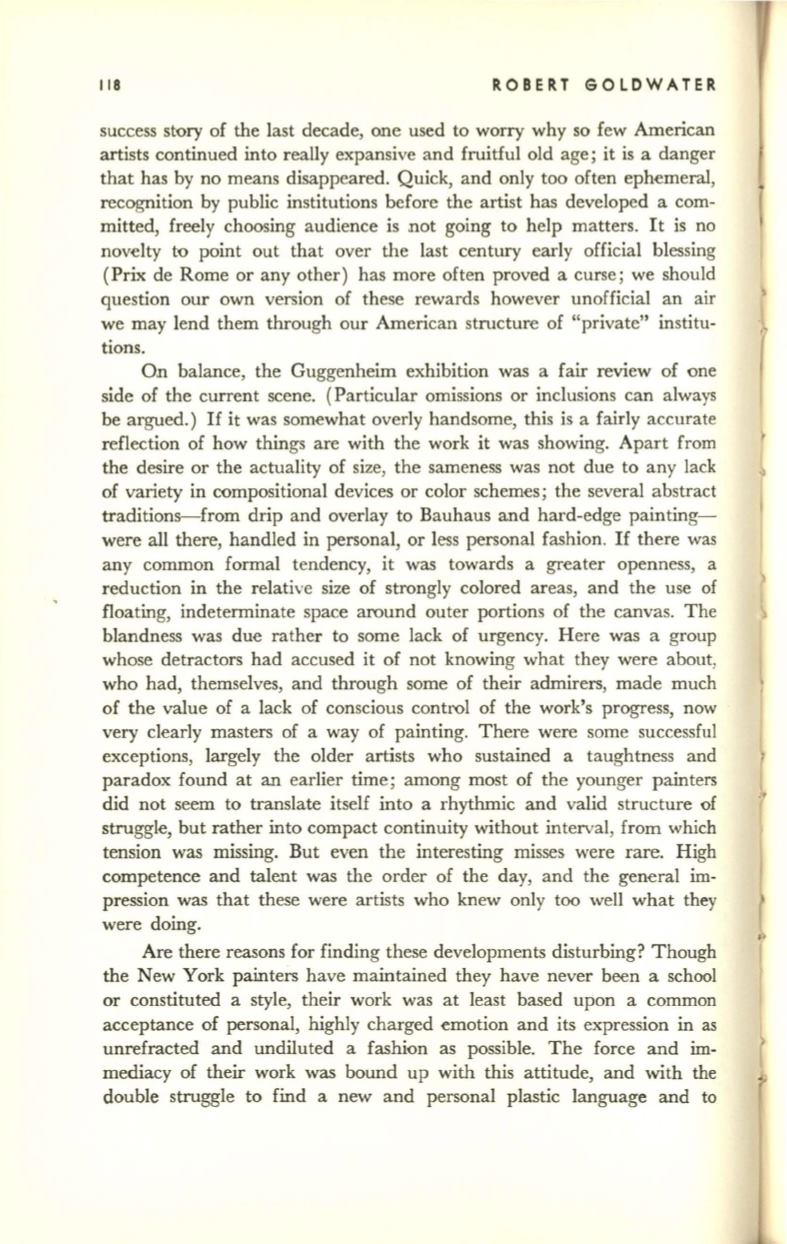
liB
ROBERT GOLDWATER
success story of the last decade, one used to worry why so few American
artists continued into really expansive and fruitful old age; it is a danger
that has by no means disappeared. Quick, and only too often ephemeral,
recognition by public institutions before the artist has developed a com–
mitted, freely choosing audience is not going to help matters. It is no
novelty to point out that over the last century early official blessing
(Prix de Rome or any other) has more often proved a curse; we should
question our own version of these rewards however unofficial an air
we may lend them through our American structure of "private" institu–
tions.
On balance, the Guggenheim exhibition was a fair review of one
side of the current scene. (Particular omissions or inclusions can always
be argued.)
If
it was somewhat overly handsome, this is a fairly accurate
reflection of how things are with the work it was showing. Apart from
the desire or the actuality of size, the sameness was not due to any lack
of variety in compositional devices or color schemes; the several abstract
traditions-from drip and overlay to Bauhaus and hard-edge painting–
were all there, handled in personal, or less personal fashion.
If
there was
any common formal tendency, it was towards a greater openness, a
reduction in the relative size of strongly colored areas, and the use of
floating, indeterminate space around outer portions of the canvas. The
blandness was due rather to some lack of urgency. Here was a group
whose detractors had accused it of not knowing what they were about,
who had, themselves, and through some of their admirers, made much
of the value of a lack of conscious control of the work's progress, now
very clearly masters of a way of painting. There were some successful
exceptions, largely the older artists who sustained a taughtness and
paradox found at an earlier time; among most of the younger painters
did not seem to translate itself into a rhythmic and valid structure of
struggle, but rather into compact continuity without interval, from which
tension was missing. But even the interesting misses were rare. High
competence and talent was the order of the day, and the general
im–
pression was that these were artists who knew only too well what they
were doing.
Are there reasons for finding these developments disturbing? Though
the New York painters have maintained they have never been a school
or constituted a style, their work was at least based upon a common
acceptance of personal, highly charged emotion and its expression in as
unrefracted and undiluted a fashion as possible. The force and
im–
mediacy of their work was bound up with this attitude, and with the
double struggle to find a new and personal plastic language and to
r


